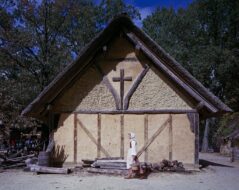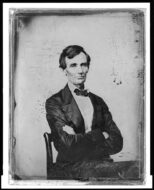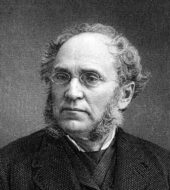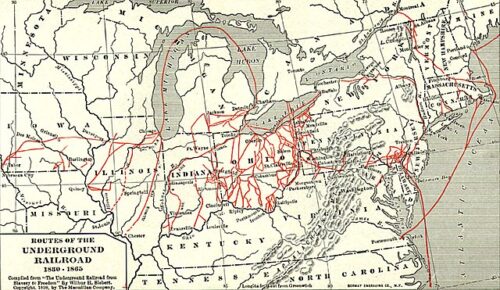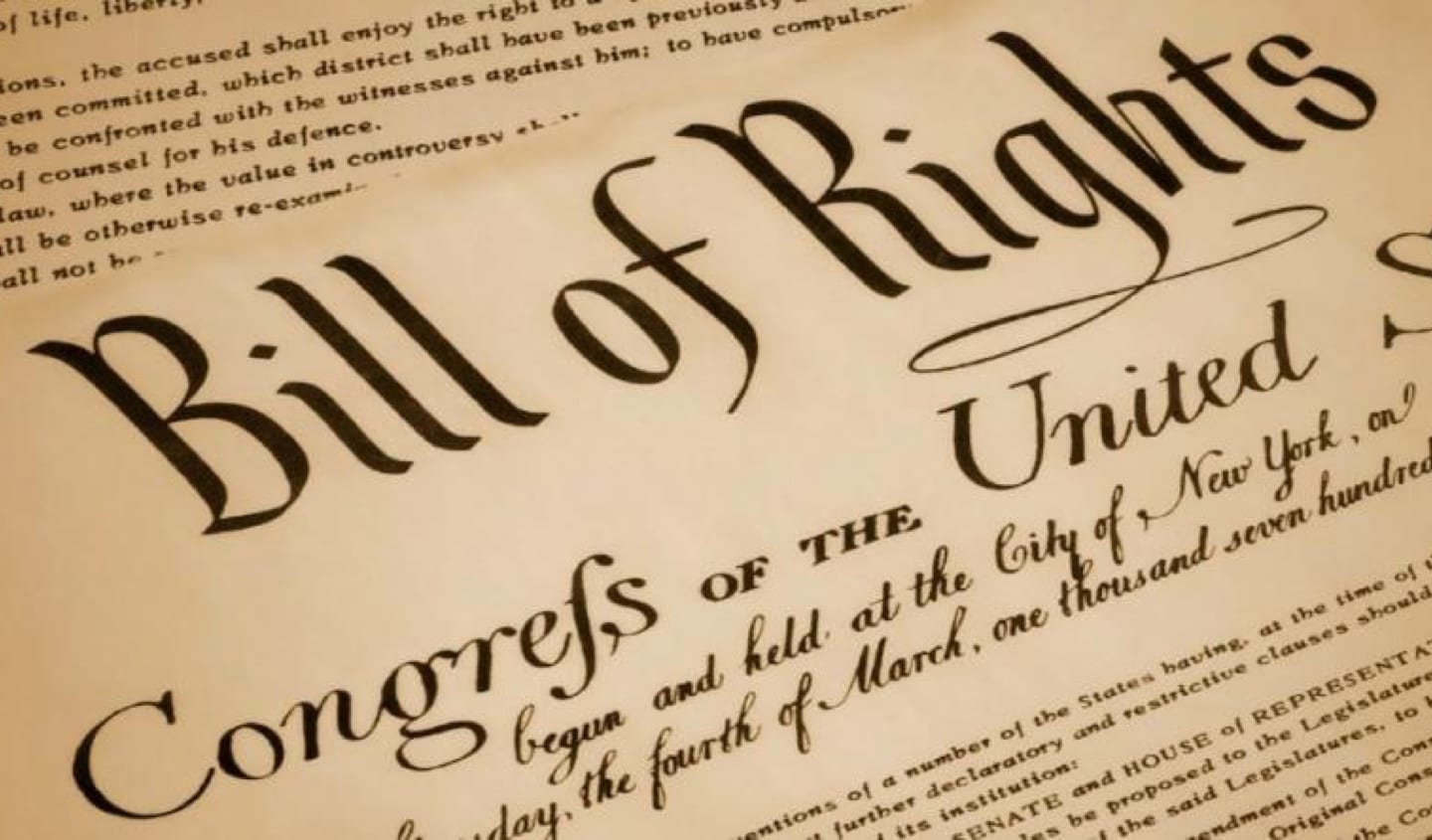
Religion in American History and Politics
This volume draws together twenty-five primary documents through which readers may trace central themes in the long, complex story of religion and politics in American history. As the first publication of the Ashbrook Center’s program in Religion in American History and Politics (RAHP), the collection aims to broaden a discussion too often limited to church-state relations. We hope to illuminate a larger dynamic: not only the influence of religion on American politics and culture, but also the influence of America on the religious convictions and practices of her citizens.
As this reciprocal relationship between religion and politics has unfolded, Americans have wrestled with certain recurrent questions. Is America a nation with a God-given mission to establish free government at home and abroad? Are religious belief and practice among its citizens necessary for the republic to survive and flourish? In what ways and to what degree should religion attempt to reform the morals and manners of Americans? Do such reform movements pose any dangers to republican government? Are there circumstances under which republicanism—or, at least, majoritarianism—might present a threat to religion or require religious believers to practice civil disobedience? Can all religious traditions accommodate American principles? Can the adherents of every faith successfully engage in republican self-government?
From the beginning, religion played an important role in shaping Americans’ identity and purpose: colonization efforts were undertaken in the name of God, with the evangelization of the native peoples or the chance to establish a society in accordance with Biblical ideals included among the many ends of settlement (See Winthrop and “Laws, Rights, and Liberties Related to Religion in Early America“). Many colonists were attracted to North America because of the potential for greater religious freedom than they had experienced in Europe. Yet prior to the American Revolution, all but a handful of the colonies had some form of religious establishment, some level of integration between church and state (See “Laws, Rights, and Liberties Related to Religion in Early America“). In the decades following the Revolution, the diversity of religious settlements in the individual states moved slowly in the direction of disestablishment, and religious liberty became increasingly a fact. What exactly the separation of church and state meant remained in question, however, as it does now. Yet, even as Americans came to the broad agreement that the institutions of church and state were to be separate, they did not agree that religion and politics could or should be. The documents illustrate this as they trace two major themes: the development and decline of the American Protestant synthesis, and the ongoing link between religion and social or civil reform and even dissent.
The American Protestant synthesis united reason, republican government, science and Reformed Christianity in a powerful combination that undergirded the Protestant establishment in the United States (see Mather and Edwards, Adams, Lincoln, and Palmer). This establishment exerted broad influence in America, not least through its dominance of American education (through most of the nineteenth century virtually all colleges were religious institutions presided over by ordained ministers). In brief, the synthesis held that the Reformation had restored the authority of human reason, and this eventually led to the restoration of reason’s authority in politics and science. The Declaration (“the laws of nature and of nature’s God”) expressed the synthesis. The fundamental premise of the synthesis was that science and revelation could not contradict each other, because God was the author of both nature and the Bible. Moral, political and scientific progress went hand in hand.
The fundamental premise of the synthesis and thus the synthesis itself came increasingly into question after the Civil War, as developments in science seemed harder and harder to reconcile with the Bible. At the same time that developments in geology, for example, challenged the account in Genesis, technical criticism of the Biblical text raised questions about the Bible itself. This new thinking very often came to the United States with students returning from graduate study abroad, principally in Germany. Evolution as an explanation of the origins and changes among living things, in the years following the publication of Darwin’s On the Origin of Species (1859), increasingly formed part of this new thinking, but only part of it. (Youmans and Hall deal with these developments.)
As the Protestant synthesis fell apart, Protestantism split into fundamentalist and modernist camps. The fundamentalists adhered to the moral and political aspects of the synthesis, particularly because they saw the changes in American society in the first decades of the twentieth century as evidence not of moral progress but of moral decline. The modernists adhered to the scientific aspects of the synthesis, continuing to promote progress, arguing in some cases that revelation was itself progressive and still, in fact, ongoing. For these progressives, the supreme virtue was tolerance, which they accused the fundamentalists of lacking. A tolerant attitude allowed new kinds of thought and behavior to emerge. And if new thought and behavior did not emerge, how could there be progress, how could God continue to reveal himself? We may understand the fundamentalists to be asking the progressives in turn, if revelation itself is progressive, by what standard are we to distinguish progress, which is presumably good, from mere change, which may be bad? (Dixon, Fosdick, and Machen deal with these issues.) The fundamentalist-modernist split still largely defines religion in the United States and continues to shape our political life.
The other major theme illuminated in this volume is the role of religion in both motivating and shaping social and political change in the colonies and, later, states (See Winthrop, Mayhew, Lyman Beecher, Edward Beecher, Lincoln, Hall, Addams, King, and Schaeffer). From John Winthrop’s almost utopian vision of a community grounded in Christian love to the more pragmatic observation, embodied in colonial legal codes, that religion tempers the vicious elements of human behavior (See “Laws, Rights, and Liberties Related to Religion in Early America“), early Americans were convinced that a religiously inspired sense of divine justice provided the best of all possible encouragements to personal and from there, social, order. A sense of divine justice properly understood would also lead some Americans to resist state power when it appeared to overstep its natural limit or threaten the public good (See Mayhew and Edwards).
As American society advanced into the western territories in the 19th century, the issue of morality in public life became increasingly important. Lincoln’s “Temperance Address” and Beecher’s “Plea for the West” present two variations on this theme: Lincoln critiqued religiously inspired approaches to reform in the name of preserving a spirit of moderation and amity in civil reform, whereas Beecher linked the preservation of American liberty directly to the spread of religious institutions and teaching. Although for many, religious arguments gave powerful incentives to moral reform and prevented moral disorder, such arguments always carried the potential for reckless zealotry that others viewed as more politically dangerous than the vices against which it was aimed.
On the other hand, as the influence of modern scientism and relativism on American religious institutions grew, many of those institutions became much less active in their pursuit of social change. Latter-day reformers like Addams, King, and Schaeffer each attempted to counteract this tendency, calling on Americans to “revive” the idealistic elements of their religious roots and apply them to the problems of modernization, urbanization, and industrialization. Schaeffer’s “Christian Manifesto,” in particular, is a call to arms and a reminder of the counter-cultural thrust of much religious teaching. All three documents show the important role of dissent in correcting and directing the public opinion of the nation on policy questions with moral dimensions.
The stories just briefly recounted are told in greater detail and with more nuance in the documents themselves. The introductions to the documents provide some context for understanding them. Whenever possible, we have used footnotes to document quotations and allusions, and to identify little-known persons and concepts mentioned but not explained in the documents. We have modernized spelling, punctuation, and capitalization except for that of “Laws, Rights, and Liberties Related to Religion in Early America”. Matter inserted in the documents for clarity is within brackets. We have also provided some study questions to promote analysis and discussion. In addition, we have provided suggestions for further reading.
These 25 documents do not, of course, tell the whole story of religion in American history and politics. For that reason, we plan additional document collections on the following topics:
The Prophetic Voice
Religious Liberty
Key Court Decisions
Women’s Voices
Private Reflections
Over time, our goal is to develop a library of documents that reflects the depth and rich variety of American religious experiences and the ways in which such experiences relate to other ongoing social and political developments. Some of these documents will come from the pens of clerics or other formal spiritual leaders; some will be written by statesmen and legislators in the heat of public crises; some will be the private reflections of individual citizens speaking in neither a ministerial nor a political capacity about their own religious experience. All, we hope, will open new pathways for investigating the course of American history in the conviction that as we learn to better understand the past, we are better equipped to face and shape our civic future.
The editors would like to thank Roger Beckett and the staff of the Ashbrook Center for their support. We particularly appreciate the editorial assistance of Lisa Ormiston and the transcription work of Brooke Branson, Madeleine Emholtz, and Brennan Kunkel.
For each of the Documents in this collection, we suggest below in section A questions relevant for that Document alone and in section B questions that require comparison between Documents.
1. John Winthrop, “A Model of Christian Charity” (1630)
A. What does Winthrop mean by “charity”? How does this principle relate to his understanding of the way that God has “disposed of the condition of mankind” so that “some must be rich, some poor, some high,” etc.? In what ways is the principle of charity intended to shape the new political community?
B. How is Winthrop’s vision of the Massachusetts Bay colonists’ covenant with God similar to or different from John Quincy Adams’ account of America in John Quincy Adams or FDR? How does his understanding of “charity” relate to later understandings of social justice and religion presented by Jane Addams, Martin Luther King, and Francis Shaeffer, for example?
2. Laws, Rights, and Liberties Related to Religion in Early America (1610-1682)
A. How do the authors of these laws understand human nature? How do they understand the role of religion in public life? What is the difference between religious toleration and freedom of conscience as presented in these laws?
B. Which of these laws, if any, would be compatible with the view of “civil liberty” presented by Henry Ward Beecher?
3. Cotton Mather, A Man of Reason (1718) and Jonathan Edwards, A Divine and Supernatural Light (1734)
A. Are the distinctions in these sermons merely matters of emphasis, or is there a genuine problem of incompatibility? What are the implications of the shift from a more socially-oriented approach to religion to a more individualistic one?
B. How does Mather’s view of reason relate to or diverge from the account of reason given by later thinkers such as Palmer, Hall, or Schaeffer? How would Lincoln evaluate Edwards’ claims about the importance of supernatural light, based on Abraham Lincoln’s “Temperance Address” (1842) and his “Second Inaugural Address” (1865).
A. Explain Mayhew’s argument: how does he reconcile the command to Christians to “be subject” to civil powers with their duty to “resist the Devil”? Is this a paradox? How does he address the criticism that his position will lead to anarchy?
B. Given that Mayhew’s sermon was delivered in celebration of the Puritan revolution in England, and that Winthrop wrote regularly in support of that revolution from Massachusetts, discuss the relationship between Winthrop’s vision of civil society (See The Massachusetts Laws and Liberties). In what ways is Mayhew’s argument for the legitimate resistance to tyranny similar to that presented in the Declaration or Schaeffer ? In what ways does it differ?
5. Excerpts from Founding Documents (1776–1798)
A. What is the significance of “nature” in the Declaration of Independence? If instead of the phrase “the separate and equal station to which the Laws of Nature and of Nature’s God entitle them,” the Declaration read simply “the separate and equal station to which the laws of God entitle them,” would that change its meaning? What is the connection between morality, knowledge and education made in the Northwest Ordinance and Washington’s Farewell Address? Would it be right to say that religion is necessary to preserve the rights enumerated in the Declaration? If so, why does the Declaration not mention this? Is Jefferson’s understanding of nature in Query VI of Notes on the State of Virginia the same as in the Declaration? How are nature and Providence connected in the Declaration? How do Jefferson and Rush differ on the issue of religion in education?
B. E. L. Youmans argues that the theory of evolution calls into question the existence of a Creator God, at least as such a God is presented in the account of creation in Genesis. If this is true, does it call into question the claim of the Declaration of Independence “that all men are created equal” and “that they are endowed by their Creator with certain unalienable Rights”?
6. George Washington, Letter to the Hebrew Congregation of Newport, Rhode Island (1790)
A. What is the difference between toleration and religious freedom? Would tolerance be acceptable given the argument of the Declaration of Independence about the rights that men are endowed with?
B. How is Washington’s view in his letter to the Hebrew Congregation similar to and different from the views expressed in the Colonial laws excerpted in “Laws, Rights, and Liberties Related to Religion in Early America” (1610-1682)?
7. John Quincy Adams, An Address…Celebrating The Declaration of Independence (July 4, 1821)
A. What is the connection that Adams sees between the Reformation and the American Revolution? According to Adams, how is the United States distinguished from all previous government? How has religion contributed to this distinction?
B. Are the views Adams expresses about reason and its role in human life similar to or different from those of Cotton Mather?
8. Lyman Beecher, A Plea for the West (1835)
A. What is the connection between religion, education, and liberty for Beecher? Why does he fear Catholicism, and what does it tell us about the types of religions that he believes will be compatible or incompatible with the American way of life?
B. How is Beecher’s vision of American expansion related to Winthrop’s “city on a hill”? How does it relate to the Northwest Ordinance or Adams’ July 4 Address? In what ways is Beecher’s understanding of religion and liberty similar to or different from that presented by Obama?
9. Edward Beecher, The Nature, Importance, and Means of Eminent Holiness Throughout the Church (1835)
A. What is holiness, according to Beecher? How is the holiness movement connected to the “regeneration of the world”? What does Beecher mean when he speaks of the regeneration of the world? What is the view of man, God and nature in the holiness and reform movements?
B. Compare Beecher’s views on God’s relationship to man with those expressed by Mather, Edwards, and Moody. In what ways do they differ? How are they similar? How might their views affect attitudes towards politics?
10. Abraham Lincoln, The Temperance Address (1842)
A. Does Lincoln see a political problem with the Temperance movement? Does he see a problem with religion in a political order based on human equality? Does he see problems with only a certain kind of religion? What characteristics of religion make it a problem for a government based on human equality?
B. How do you think that Lincoln would respond to Edward Beecher’s sermon on holiness?
11. Benjamin Morgan Palmer, “Baconianism and the Bible” (1852)
A. Does Palmer’s article draw a connection, even implicitly, between science and the Declaration of Independence? If so, what is the connection? How does Palmer argue that the Reformation and modern science are alike? What is the status of the Bible for Palmer?
B. Compare Palmer’s account of science and religion to Youmans’ and Hall’s.
12. Abraham Lincoln, Second Inaugural Address (1865)
A. Is Lincoln’s view of God’s relation to man the same in the Temperance Address and the Second Inaugural? How would you characterize that view?
B. Is there a similarity in the view of Southerners in the Second Inaugural and the view of drunkards in the Temperance Address? Is this the same view or attitude expressed toward sin in Beecher’s sermon on holiness?
13. Henry Ward Beecher, “The Moral Theory of Civil Liberty” (1869)
A. What does Beecher mean by civil liberty? Why does he say that “self-government” is a better term than liberty? How is self-government connected to morality? What is the connection between religion and morality for Beecher? How does Beecher understand nature? What does he see as the connection between nature and self-government? Does Beecher’s argument require the existence of God or any of the teachings of the Bible?
B. Would A. C. Dixon or Fosdick accept Beecher’s argument? Would Mather?
14. E. L. Youmans, “Herbert Spencer and the Doctrine of Evolution” (1874)
A. Why does Youmans believe that Spencer is important? What is the connection between Spencer’s view of nature, as described by Youmans, and Spencer’s views of morality and social relations?
B. How is the view of nature in Spencer’s work, as Youmans describes it, different from nature as understood by Palmer? How is the view of society and government in Spencer’s work, as Youmans describes it, different from the views expressed by John Winthrop and Henry Ward Beecher?
15. Dwight L. Moody, “On Being Born Again” (1877)
A. What does it mean to be “born again,” according to Moody? How is the born again person supposed to act in their society?
B. In what ways does the concept of being “born again” seem similar to or different from the experience described by Mather or Edwards? How does Moody’s view relate to the vision of social engagement presented by Addams or King?
16. G. Stanley Hall, “Philosophy in the United States” (1879)
A. What is Hall’s attitude toward religion? Does he see philosophy as the antagonist of religion? What explains this attitude?
B. How do the views expressed by Youmans (See “Herbert Spencer and the Doctrine of Evolution” (1874)) and Hall differ from those expressed by Palmer and Henry Ward Beecher?
17. Jane Addams, “Religious Education and Contemporary Social Conditions” (1911)
A. What type of religious education does Addams see around her, how does she want it to change, and why? How would you describe her understanding of religion and its relationship to human nature?
B. Is Addams’ vision of religious education similar to or different from that presented by Beecher? How would she respond to Mather or Dixon both of whom seem to be more concerned about teaching proper theology than engaging in social reform per se? In what ways can we connect Addams’ vision of religiously motivated social reform to Winthrop’s vision of Christian charity, if at all?
18. A. C. Dixon, “The Bible at the Center of the Modern University” (1920)
A. What are the key characteristics of what Dixon calls German thinking? Why is he so concerned that it will gain influence in the United States? How is it related to evolution? Is what Dixon describes as German thinking compatible with the principles of the Declaration of Independence? Why is Lincoln important to Dixon? What is Dixon’s attitude toward science? What is Dixon’s attitude toward the Bible?
B. Would Dixon consider Spencer, as described by Youmans, as “German thinking”? What would Dixon say about Spencer’s social and ethical philosophy?
19. Harry Emerson Fosdick, “Shall the Fundamentalists Win?” (1922)
A. What is Fosdick’s attitude toward science? Toward the Bible? What does Fosdick mean by progressive revelation? Is there a connection between progressive revelation and evolution? What is the greater authority for Fosdick, the Bible or science?
B. What would Fosdick say about Dixon’s claims about the strong mistreating the weak? Would he object? If so, on what basis?
20. J. Gresham Machen, “The Bible,” Christianity and Liberalism (1923)
A. What does Machen mean by the inerrancy of the Bible? Why is it important to him?
B. How does Machen’s view of inerrancy differ from Fosdick’s?
21. Franklin Delano Roosevelt, Address to the National Council of Catholic Charities (1933)
A. What does Roosevelt mean by social justice? What is the connection between religion and social justice? What does Roosevelt understand to be the roles of government and the churches with regard to social justice?
B. How are Roosevelt’s views of religion and politics different from those expressed by Dixon, Fosdick, and Spencer, as described by Youmans.
22. Martin Luther King, “Can a Christian Be a Communist?” (1962)
A. How does King portray America in relation to the divine? In what ways does he suggest American religion has failed in regard to Civil Rights? What remedies does he recommend for these failures? How did the religious rhetoric of the Civil Rights Movement affect its ability to dissent from the established political and cultural order? What does King suggest Christians can learn from communism and how should they apply those lessons to America’s ongoing racial, cultural, social, and economic problems?
B. In what ways are King’s views of Christianity and politics and how human beings should treat one another similar to or different from those of Winthrop, Dixon, Fosdick, and Schaeffer?
23. Francis Schaeffer, “A Christian Manifesto” (1982)
A. What is Schaeffer’s “manifesto” – that is, to what course of action is he calling American Christians? What does Schaeffer mean by “Humanism” and why does he see it as such a threat?
B. Is Schaeffer’s understanding of civil disobedience similar to or different from that presented by Mayhew? How would Schaeffer respond to Palmer or Hall?
24. Ronald Reagan, Remarks at the Annual Convention of the National Association of Evangelicals (1983)
A. What is the connection Reagan sees between religion and liberty? What does Reagan mean by secularism? Why does he see it as a threat to America?
B. Is the connection Reagan sees between religion and liberty similar to or different from the view expressed in the Northwest Ordinance and Washington’s Farewell Address?
25. Barack Obama, Address at Cairo University (2009)
A. What is the “new beginning” that Obama sought in Cairo? What is it based on? Is it based on a religious precept or a principle evident to all human beings? Is the “new beginning” more likely to succeed if it is based on one or the other? In his speech, the President said that “freedom in America is indivisible from the freedom to practice one’s religion.” What does this mean?
B. Are Obama’s views of religion most similar to Dixon’s or Fosdick’s? Are Obama’s views of the relationship between religion and freedom similar to those of Beecher or Reagan? If they differ, how do they differ?
Ahlstrom, Sydney E. A Religious History of the American People. New Haven: Yale University Press, 1972; 2nd edition, with a chapter by David Hall, 2004.
Bonomi, Patricia U. Under the Cope of Heaven: Religion, Society, and Politics in Colonial America. New York: Oxford University Press, 1986; updated edition, 2003.
Bozeman, Theodore Dwight. Protestants in an Age of Science: The Baconian Ideal and Antebellum American Relgious Thought. Chapel Hill, North Carolina: University of North Carolina Press, 1977.
Gaustad, Edwin S. and Leigh Schmidt. The Religious History of America: The Heart of the American Story from Colonial Times to Today. New York: HarperOne, 2004.
Evensen, Bruce J. God’s Man for the Gilded Age: D. L. Moody and the Rise of Modern Evangelicalism. New York: Oxford University Press, 2003.
Hall, David D. A Reforming People: Puritanism and the Transformation of Public Life New England. New York: Knopf, 2011.
Kidd, Thomas S. God of Liberty: A Religious History of the American Revolution. New York: Basic Books, 2010.
———. The Great Awakening: The Roots of Evangelical Christianity in Colonial America. New Haven: Yale University Press, 2009.
Larsen, Edward J. Summer of the Gods: The Scopes Trial and America’s Continuing Debate over Science and Religion. Cambridge: Harvard University Press, 1997.
Marsden, George M. Understanding Fundamentalism and Evangelicalism. Grand Rapids, MI: Wm. B. Eerdmans Publishing Company, 1991.
———. The Soul of the American University: From Protestant Establishment to Established Nonbelief. New York: Oxford University Press, 1996.
———. Fundamentalism and American Culture. New York: Oxford, 2006.
Miller, Randall M., Harry S. Stout, and Charles Reagan Wilson, eds. Religion and the American Civil War. New York: Oxford University Press, 1998.
Miller, Steven P. The Age of Evangelicalism: America’s Born-Again Years. New York: Oxford, 2014.
Murphy, Andrew R. Prodigal Nation: Moral Decline and Divine Punishment from New England to 9/11. New York: Oxford, 2008.
Noll, Mark A. America’s God: From Jonathan Edwards to Abraham Lincoln. New York: Oxford, 2005.
Porterfield, Amanda. Conceived in Doubt: Religion and Politics in the New American Nation. Chicago: University of Chicago Press, 2012.
Smith, Christian (ed.). The Secular Revolution: Power, Interests, and Conflict in the Secularization of American Public Life. Berkley: University of California Press, 2003.
Swartz, David R. Moral Minority: The Evangelical Left in an Age of Conservatism. Philadelphia: University of Pennsylvania Press, 2014.
West, John G. The Politics of Revelation and Reason: Religion and Civic Life in the New Nation. Lawrence, Kansas: University Press of Kansas, 1996.
White, Ronald C., Jr. Social Gospel: Religion and Reform in Changing America. Philadelphia: Temple University Press, 1976.
Worthen, Molly. Apostles of Reason: The Crisis of Authority in American Evangelicalism. New York: Oxford, 2016.



